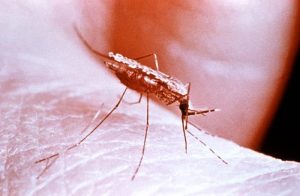Since 2000, the number of malaria deaths in Africa and worldwide have decreased significantly, according to new data published in the World Malaria Report 2014. However, the report notes despite the great news, challenges still remain.

Image/CDC
Between 2000 and 2013, the malaria mortality rate decreased by 47% worldwide and by 54% in the WHO African Region – where about 90% of malaria deaths occur. In addition, malaria cases are also steadily declining. New analysis across sub-Saharan Africa reveals that despite a 43% population increase, fewer people are infected or carry asymptomatic malaria infections every year: the number of people infected fell from 173 million in 2000 to 128 million in 2013.
These achievements were due in large part to scaled up efforts in battling malaria whether it be increased use of insecticide-treated bed nets to improved diagnostics. Meanwhile, in 2013, 392 million courses of artemisinin-based combination therapies (ACTs), a key intervention to treat malaria, were procured, up from 11 million in 2005.
“We can win the fight against malaria,” says Dr Margaret Chan, Director-General, WHO. “We have the right tools and our defenses are working. But we still need to get those tools to a lot more people if we are to make these gains sustainable.”
Despite the gains, many challenge’s remain. Insecticide resistance has been reported in 49 countries around the world, where this is a key component in vector control. As far as treatments, resistance to artemisinin has been detected in 5 countries of the Greater Mekong subregion and insufficient data on malaria transmission continues to hamper efforts to reduce the disease burden.
Progress has also been slow in scaling up preventive therapies for pregnant women, and in adopting recommended preventive therapies for children under 5 years of age and infants.
The WHO especially points out the progress on malaria in countries affected by the Ebola virus. The outbreak in West Africa has had a devastating impact on malaria treatment and the roll-out of malaria interventions. In Guinea, Sierra Leone and Liberia, the 3 countries most severely affected by the epidemic, the majority of inpatient health facilities remain closed, while attendance at outpatient facilities is down to a small fraction of rates seen prior to the outbreak.
The three countries saw an estimated 6.6 million malaria cases and 20 000 malaria deaths in 2013 alone.
WHO has issued new guidance on temporary measures to control the disease during the Ebola outbreak: to provide ACTs to all fever patients, even when they have not been tested for malaria, and to carry out mass anti-malaria drug administration with ACTs in areas that are heavily affected by the Ebola virus and where malaria transmission is high. In addition, international donor financing is being stepped up to meet the further recommendation that bednets be distributed to all affected areas.

